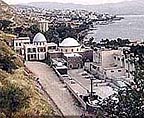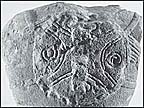 "From the vestiges of an old quarry, piles of rock, weeds, and a sewage treatment plant, a whole city will rise over the next 10 to 15 years. The theater will host performances, couples will stroll the main street, and the magnificent mosaics will be a sight for the sore eyes of visitors from afar. "
"From the vestiges of an old quarry, piles of rock, weeds, and a sewage treatment plant, a whole city will rise over the next 10 to 15 years. The theater will host performances, couples will stroll the main street, and the magnificent mosaics will be a sight for the sore eyes of visitors from afar. "
Tiberias was founded in 20 C.E. and its Jewish community continued in existence until the 11th century. At its height, from the 3rd to the 8th century, some 25,000-30,000 people lived there. According to Hirschfeld, "the city was full of life, with crowded streets, a busy fishing port and a market for the entire Galilee." Tiberias served as a spiritual and political hub for the Jewish people, as well as a center for halakha (Jewish religious law).
By the end of the 4th century, Tiberias also became a center of Christian pilgrimage. Professor Yizhar Hirschfeld of Hebrew University's Institute of Archaeology, director of the excavation, said, "This is one of the most beautiful sites in the world, of the greatest significance for Jewish history. Few other sites in the Roman Empire were more important."
Hirschfeld spoke of the markets and the bathhouse, which figured prominently in the sayings of the ancient Jewish sages, where "wise men would sit and spin tales." He showed the location of the basilica in which the Sanhedrin had its headquarters; the city's walls and its theater; the study house and the beautiful mosaics of the synagogues.
See also Tiberias
 "A man with a metal detector has unearthed a Roman coin so rare it bears the face of a mystery emperor who ruled Britain for a matter of days.
"A man with a metal detector has unearthed a Roman coin so rare it bears the face of a mystery emperor who ruled Britain for a matter of days.
 "A life-sized statue of a warrior discovered in southern France reflects a stronger cultural influence for the Etruscan civilization throughout the western Mediterranean region than previously appreciated.
"A life-sized statue of a warrior discovered in southern France reflects a stronger cultural influence for the Etruscan civilization throughout the western Mediterranean region than previously appreciated.